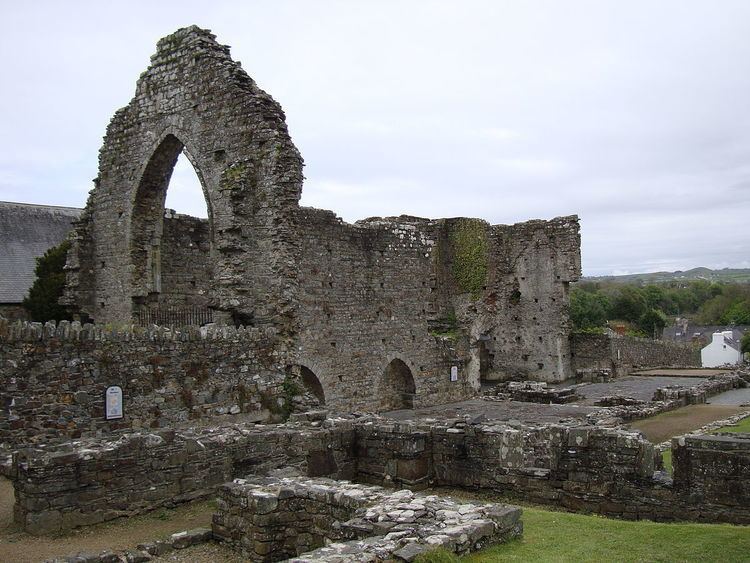Phone +44 1239 615389 | ||
 | ||
Address Shingrug, St Dogmaels SA43 3DX, United Kingdom Hours Open today · 10AM–4PMFriday10AM–4PMSaturday10AM–4PMSunday10AM–4PMMonday10AM–4PMTuesday10AM–4PMWednesday10AM–4PMThursday10AM–4PMSuggest an edit Similar The Coach House, Cilgerran Castle, Pembrokeshire Candle Centre, Ceibwr Bay, Pill Priory | ||
St Dogmael's Abbey is an abbey in St Dogmaels in Pembrokeshire, Wales, on the banks of the River Teifi and close to Cardigan and Poppit Sands. It is named after Dogmael, a 6th-century saint said to have been the son of Ithel ap Ceredig ap Cunedda Wledig, and also reputedly the cousin of Saint David.
The abbey was built on or very close to the site of the pre-Norman conquest clas church of Llandudoch. It was founded between 1113 and 1115 for a prior and twelve monks of the Tironensian Order. The founders were Robert fitz Martin and his wife, Maud Peverel (sister of William Peverel the younger, d.1149). In 1120 Abbot William of Tiron consented to fitz Martin's request that the priory become an abbey. Abbot Fulchard was installed by Bishop Bernard of St David's. It remained a daughter house of Tiron, probably until its dissolution. However, in 1138, the village and abbey of St Dogmaels were sacked by Gruffudd ap Cynan's sons, Owain Gwynedd and Cadwaladr, acting with princes Anaraud and Cadell. In 1188, Gerald of Wales stayed at the abbey with Baldwin, Archbishop of Canterbury, whilst they gathered support for the Third Crusade on their preaching tour of Wales.
The earliest surviving remains date from the first half of the twelfth century. It seems that sufficient of the church was built to satisfy the immediate requirements of the monastery, but that the western part for the use of the laity, was not finished. The nave was completed in the thirteenth century, although without the intended aisles. Unusually the church lacks a west doorway, possibly because of the slope of the ground becomes steeper. The square-ended sanctuary was built over a vaulted crypt, possibly a repository for relics of St Dogmael. About the middle of the thirteenth century, the cloister was enlarged northwards; the cloister arcades were rebuilt in stone about the same time. The domestic quarters were extensively rebuilt at the end of the thirteenth or beginning of the fourteenth century. A new infirmary was built, followed by a chapter house In the fourteenth or fifteenth century, much of the west range was altered to provide improved accommodation for the abbot. A new wing was added for the abbot's guests. The last alteration to the church was the rebuilding of the north transept, with its elaborate fan vaulted roof. This happened in the early sixteenth century, not long before the suppression of the monastery. The lavish design indicates it may have been an individually distinct chapel, possibly built as a memorial to the founder's family, the lords of Cemais.
The abbey was dissolved in 1536, along with hundreds of other houses whose annual income was less than £200. By this time, there were only eight monks and the abbot. The majority of the abbey's possessions were leased to John Bradshaw of Presteigne in Radnorshire. He built a mansion, probably within the abbey precinct.
Substantial parts of the church survive, including the western end wall, the north wall, northern transept. The crypt, beneath the former eastern two bays of the presbytery is preserved to the springing of the vault. Fifteenth century floor tiles remain in large areas of the nave. The abbey is Grade I listed.
The abbey was known for its library. One manuscript, a 13th-century copy of Eusebius's Historia Ecclesiastica, survives and is housed in St John's College, Cambridge.
